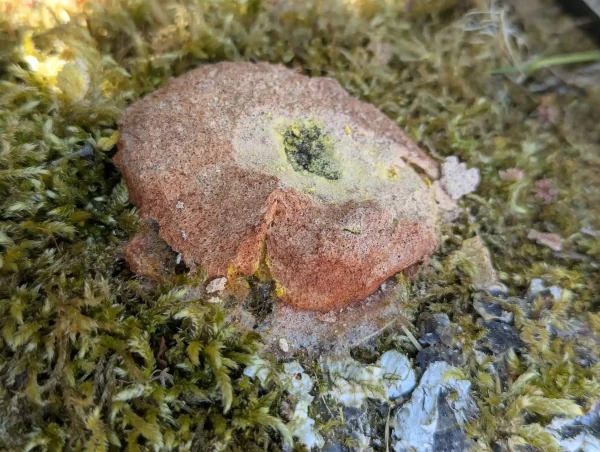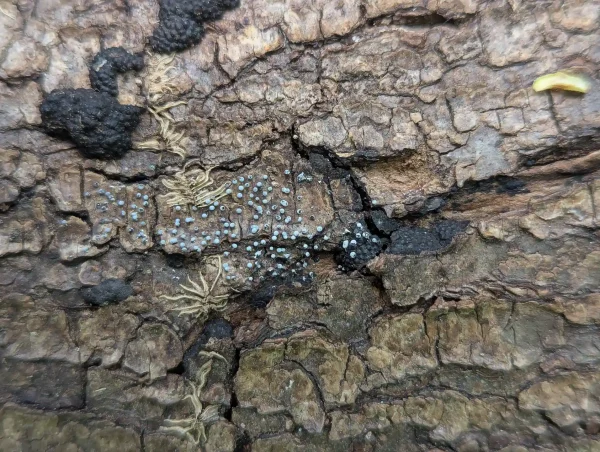Slime moulds at Fungi Foray – Upton Fen (Norfolk Wildlife Trust) – 17th May 2025
Just a few of the species that the daughter & I found at a recent Norfolk Fungus Study Group visit to Upton Fen. We left early, but many more species were found and recorded by others.
This was an exciting slime mould find – it looked like it could be a Fuligo but which one, certainly it didn’t look like a typical F. septica with it’s usual bright yellow cortex. After some discussion it was accepted that it was likely Fuligo rufa.

The aethalium’s cortex had a wonderful rusty colour and seemed to have – as Bruce Ing describes in his handbook of British slime moulds [1] – at least one “distinct spongy, foamy layer” that crumbled “away in large pieces”.
In his handbook, Ing lists F. rufa as a different species, however, the consensus is that it is a variety of F. septica. [2]
An interesting paper by Thomas Hoppe on Fuligo septica and it’s varieties [3] suggests that var. rufa is genetically and morphologically more distinct from the other varieties. The paper has a photo of F. rufa that is very similar to the one we found.
The sporangia in the photo below looked similar the Diderma spumarioides sporangia that were spotted on a Norfolk Fungus Study Group foray last year at Dickleburgh Moor. The same forayer that identified them then confirmed that these were D. spumarioides.

[1] The Myxomycetes of Britain and Ireland 2020 edition (2024 reprint) – Bruce Ing
[2] https://www.nomen.eumycetozoa.com/data/report.php?busca=rufa&por=genno&id=981&tipo=Tax
[3] What is the best: A four marker phylogenetic study of the dark- spored myxomycete Fuligo septica by Thomas Hoppe